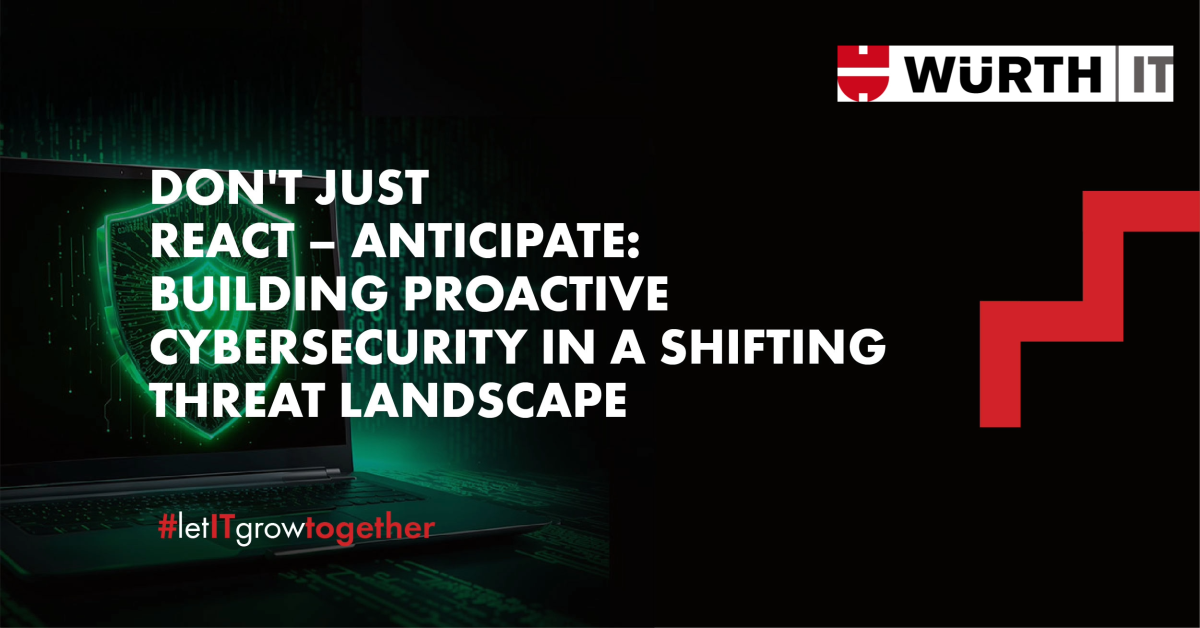Don't Just React - Anticipate: Building Proactive Cybersecurity in a Shifting Threat Landscape

Author: Parikshit Barve, Head of IT
The digital world today is a battlefield where Cyberattacks are no longer a question of "if" but "when," and the consequences can be devastating. As companies grow increasingly reliant on cloud services, digital supply chains, Integrated applications, and connected devices, they face a rising tide of cyberattacks. Businesses, especially in a data-driven world, need to move beyond reactive cybersecurity measures and embrace a proactive, resilient strategy that anticipates threats and minimizes damage.
Consider these alarming statistics:
- Cybercrime damages are predicted to hit $10.5 trillion annually by 2025. (Cybersecurity Ventures)
- Ransomware attacks are expected to occur every 2 seconds by 2031. (Cybersecurity Ventures)
- Only 5% of companies’ folders are properly protected. (Varonis)
The urgency for businesses to adopt more resilient and proactive cybersecurity strategies.
Research from IBM indicates that companies with proactive cybersecurity measures, such as continuous monitoring and predictive analytics, reduce breach costs by nearly 30%. Equally crucial is building resilience into cybersecurity frameworks - minimizing disruption when breaches occur and recovering quickly.
According to Ponemon Institute's 2023 study, organizations that focus on resilience experience 45% less downtime after a cyberattack, which directly translates into cost savings and operational continuity.
Anticipating the threats and building a resilient cybersecurity strategy requires a proactive approach that encompasses:
- Predictive Analysis: Leverage AI and machine learning to identify potential threats before they materialize. Analyse network traffic, user behaviour, and emerging vulnerabilities to anticipate attacks.
- Continuous Monitoring: Implement 24/7 security monitoring to detect and respond to incidents in real time. This includes intrusion detection systems, security information and event management (SIEM) tools, and threat intelligence feeds.
- Employee Education: Human error remains a significant vulnerability. Invest in regular and updated cybersecurity training for employees to raise awareness about phishing scams, social engineering, and best practices for data protection.
- Multi-Layered Security: Don't rely on a single solution. Implement a multi-layered approach that includes firewalls, antivirus software, intrusion prevention systems, and data encryption to create a robust defence.
- Regular Vulnerability Assessments and Penetration Testing: Proactively identify weaknesses in your systems and applications through regular vulnerability assessments and penetration testing. Simulate real-world attacks to uncover vulnerabilities and strengthen your defences.
- Incident Response Planning: Develop a comprehensive incident response plan to guide your actions in case of a cyberattack. This plan should outline procedures for containment, eradication, recovery, and communication.
Conclusion:
By adopting a proactive and resilient cybersecurity strategy, businesses can better defend against threats and minimize the impact of inevitable breaches. As cyberattacks become more frequent and sophisticated, a robust strategy is not just an option—it's a necessity for survival in the digital era.
